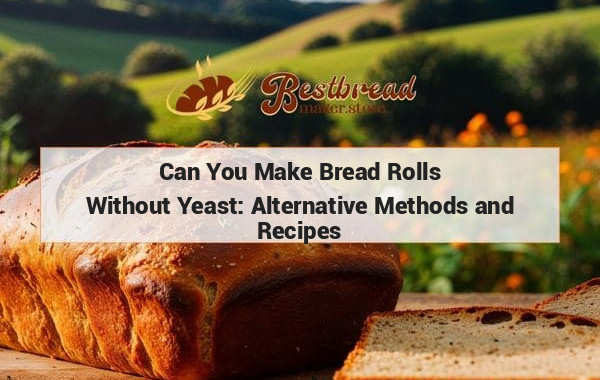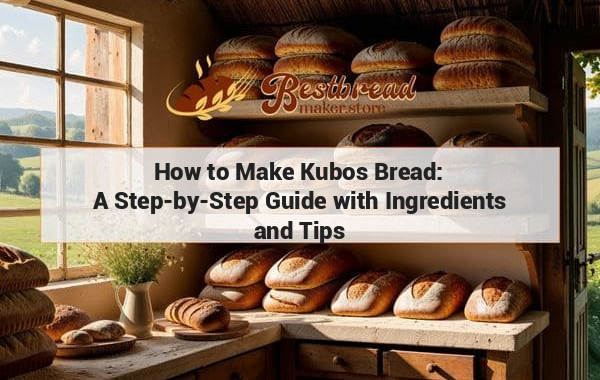Buckwheat Bread Maker Recipe: A Delicious Gluten-Free Option for Your Homemade Bread
Looking for a delicious buckwheat bread maker recipe? Try this simple and tasty recipe that will make your homemade bread baking a breeze. With just a few key ingredients like buckwheat flour, yeast, water, and salt, you can create a healthy and gluten-free bread that is perfect for sandwiches or toast. Follow the instructions on your bread maker for the best results, and enjoy the fresh aroma of homemade bread filling your kitchen. Give this recipe a try and impress your family and friends with your baking skills!
Buckwheat bread is a delicious and nutritious option for those who are looking to enjoy homemade bread with added health benefits. Whether you're gluten-sensitive or simply exploring alternative flours, a buckwheat bread maker recipe can provide a wholesome, hearty loaf that’s easy to prepare using a bread machine.
Key Takeaways:
Buckwheat bread can be easily made using a bread machine by mixing buckwheat flour with complementary ingredients. It's a gluten-free, nutrient-rich option that is perfect for anyone seeking healthier bread alternatives.
How to Make Buckwheat Bread in a Bread Maker: Key Ingredients
When it comes to making buckwheat bread, the first thing to know is that buckwheat flour is gluten-free. This means you’ll need to combine it with other ingredients to ensure the bread holds together well and rises properly. Below are the key ingredients you’ll need for your buckwheat bread maker recipe:
- Buckwheat flour – The star of the recipe, buckwheat flour gives the bread a hearty, nutty flavor.
- Tapioca or potato starch – These help improve the bread's texture, providing lightness to balance out the density of the buckwheat.
- Xanthan gum – Since buckwheat is gluten-free, xanthan gum helps create a binding effect similar to gluten.
- Yeast – Essential for the bread to rise, yeast will create a fluffy texture.
- Warm water – Needed to activate the yeast.
- Olive oil – Helps to keep the bread moist and adds flavor.
- Salt – Enhances the flavor of the bread.
- Honey or sugar – Not only adds sweetness but also helps feed the yeast to get a good rise.
This combination of ingredients creates a loaf that is both flavorful and textured. By using a bread machine, the process is simplified, making it easier for anyone to create a perfect buckwheat loaf with minimal effort.
The Benefits of Buckwheat Bread
Before diving into the recipe, let's explore the health benefits of buckwheat. It's rich in nutrients and provides a variety of health benefits, making it an ideal flour for bread:
- Gluten-Free: Buckwheat is naturally gluten-free, making it suitable for people with celiac disease or gluten sensitivities.
- Rich in Fiber: High fiber content aids digestion and helps maintain a healthy gut.
- Packed with Minerals: Buckwheat is a great source of important minerals like magnesium, manganese, and phosphorus.
- Good for the Heart: Buckwheat contains rutin, an antioxidant that can improve circulation and reduce the risk of heart disease.
Adding buckwheat bread to your diet can contribute to a balanced and nutritious lifestyle, especially when you bake it yourself using high-quality ingredients.
Step-by-Step Guide to Making Buckwheat Bread in a Bread Maker
Now that you understand the benefits and ingredients, let’s dive into the step-by-step process for making buckwheat bread in a bread machine.
H2: Salient Ingredients for Buckwheat Bread
Preparing the Ingredients
Begin by gathering all of your ingredients. It’s important to measure accurately, especially for gluten-free baking, as small differences can affect the outcome of the loaf. Use the following quantities for a medium loaf:- 2 cups buckwheat flour
- 1 cup tapioca or potato starch
- 1 tsp xanthan gum
- 1 packet active dry yeast
- 1 ½ cups warm water
- 2 tbsp olive oil
- 1 tbsp honey (optional)
- 1 ½ tsp salt
Loading the Bread Maker
Once your ingredients are ready, load them into the bread maker in the order recommended by your machine’s manufacturer. Typically, this means liquids first (water, oil, honey), followed by dry ingredients (flour, starch, xanthan gum), with yeast on top.
H3: Selecting the Bread Program
Set your bread maker to the gluten-free setting, if available. If your machine doesn’t have this option, use the basic or whole wheat setting. The key is to ensure the dough gets enough time to rise but doesn’t over-knead since buckwheat doesn’t need the extensive kneading that wheat-based dough requires.
H3: Monitoring the Dough
During the first kneading cycle, it’s important to check the consistency of the dough. Buckwheat flour absorbs water differently from wheat flour, so if the dough looks too dry, add a little more water (a tablespoon at a time). Conversely, if it’s too wet, sprinkle in a bit more flour.
H3: Baking and Cooling
Once the baking cycle is complete, remove the bread from the machine and allow it to cool on a wire rack. It’s best to let the bread cool completely before slicing, as gluten-free bread can be delicate when warm.
Exploring Close Entities: Pairing Buckwheat Bread with Toppings and Spreads
Buckwheat bread has a unique flavor that pairs well with both savory and sweet toppings. Here are a few popular options to try:
Savory Options:
Buckwheat’s earthy taste makes it a perfect match for savory toppings like avocado, hummus, or smoked salmon. You can also enjoy it with olive oil and a sprinkle of sea salt for a simple yet satisfying snack.Sweet Options:
For those who enjoy a sweeter twist, try pairing buckwheat bread with honey, nut butter, or fruit preserves. The dense texture of the bread holds up well to rich, flavorful spreads.
Variations of Buckwheat Bread Recipe for Different Dietary Preferences
One of the great things about a buckwheat bread maker recipe is that it can be easily modified to suit different dietary needs:
H3: Vegan Buckwheat Bread
To make a vegan version of this recipe, simply substitute the honey with maple syrup or agave nectar. You can also replace olive oil with coconut oil for a slightly different flavor profile.
H3: Nut-Free Buckwheat Bread
If you need a nut-free version, ensure all your ingredients (like starches and xanthan gum) are certified nut-free. Buckwheat itself is not a nut but is often processed in facilities that also handle nuts, so check the labels.
Frequently Asked Questions
H3: Is buckwheat bread gluten-free?
Yes, buckwheat is naturally gluten-free. However, when baking gluten-free bread, it’s important to add ingredients like xanthan gum or starch to help the dough bind and rise properly.
H3: Can I make buckwheat bread without a bread machine?
Absolutely! You can mix the ingredients by hand or with a stand mixer, let the dough rise in a warm place, and then bake it in a preheated oven at 350°F for about 45-50 minutes.
H3: How long does buckwheat bread last?
When stored in an airtight container, buckwheat bread will last about 3-4 days at room temperature. For longer storage, slice the bread and freeze it.
H3: Can I add seeds or nuts to this buckwheat bread recipe?
Yes, adding seeds or nuts can enhance the flavor and texture of buckwheat bread. Consider folding in sunflower seeds, flaxseeds, or chopped walnuts after the first kneading cycle.
H3: Where can I buy a good bread maker for gluten-free baking?
For those looking to invest in a reliable bread machine, check out bestbreadmaker.store, where you’ll find a selection of top-rated models ideal for gluten-free recipes like buckwheat bread.
By following this recipe, you'll be able to enjoy a freshly baked, nutritious loaf of buckwheat bread from the comfort of your home.








